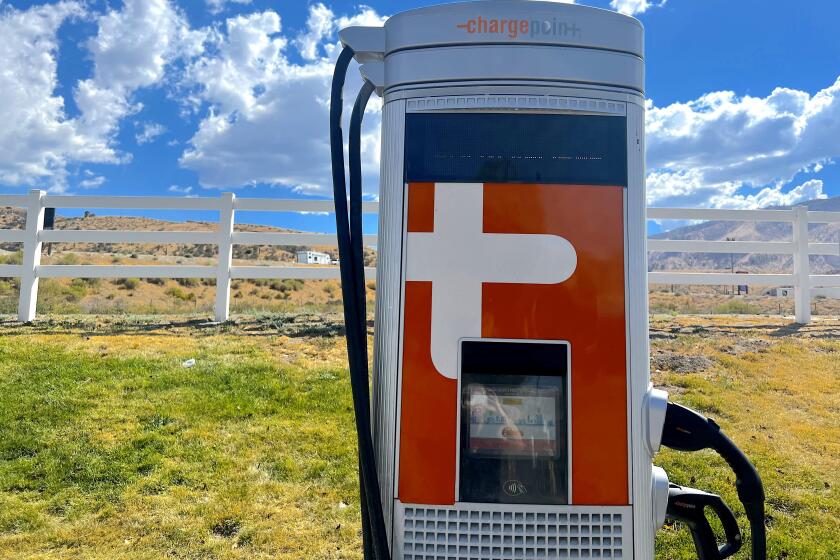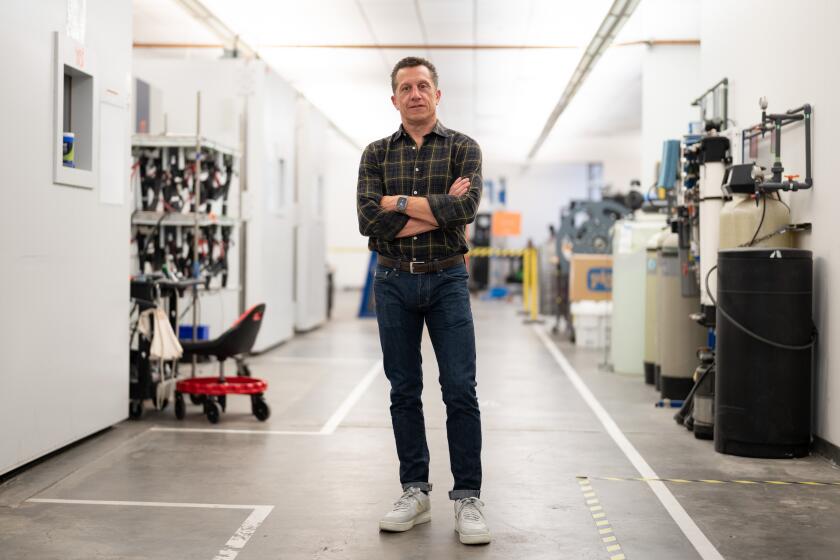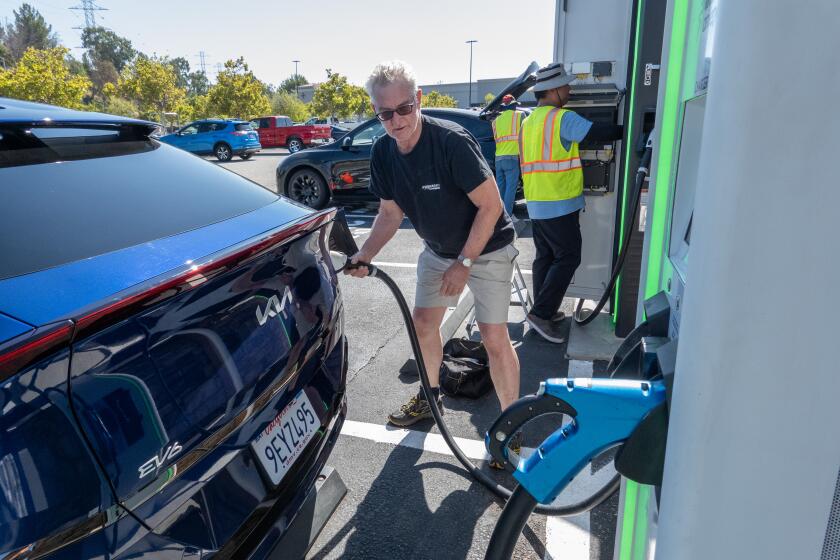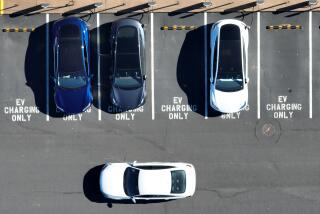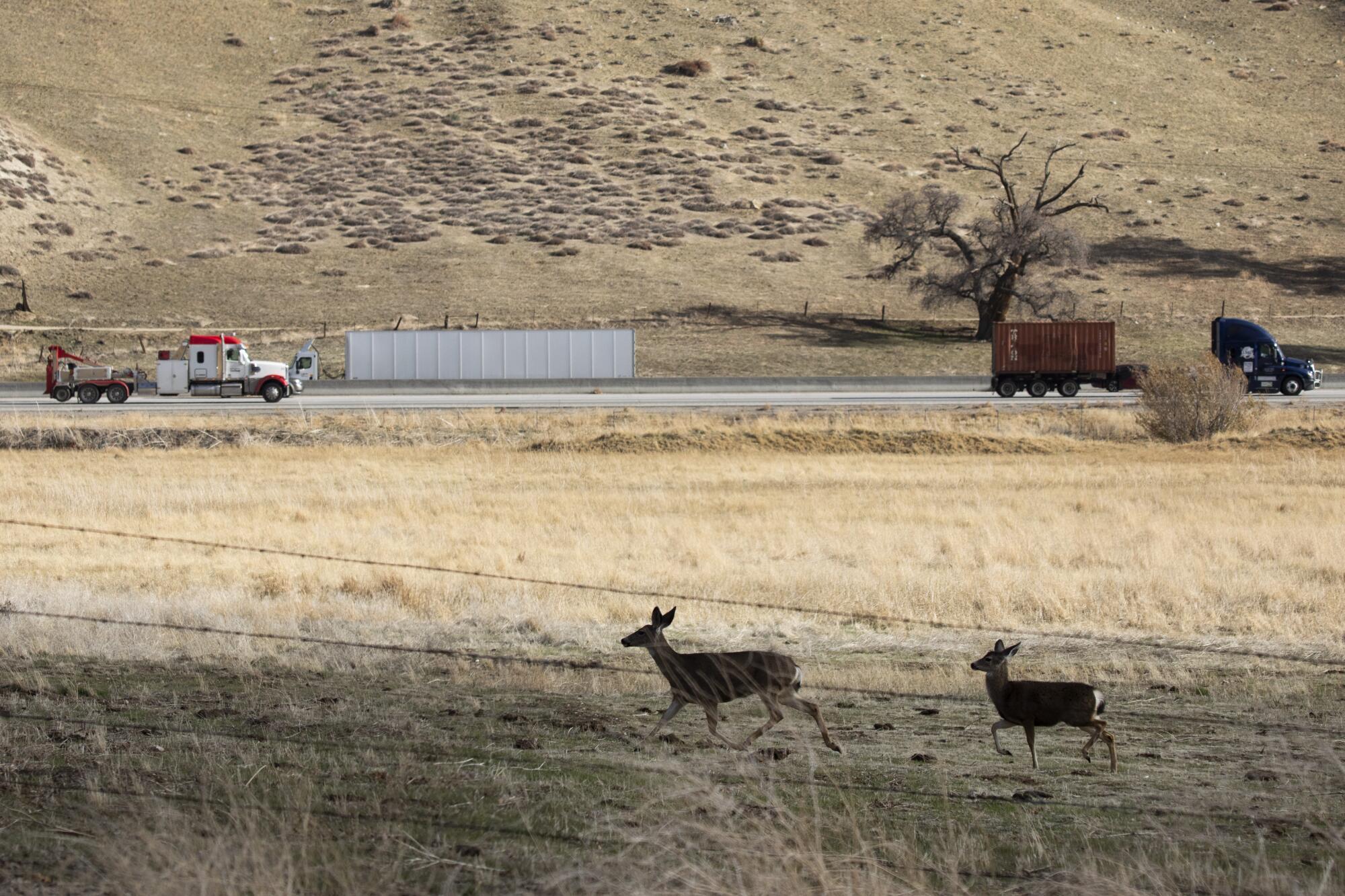
- Share via
EV drivers braving Interstate 5 will soon get a chance for a double charge — electrons for the car, caffeine for the driver.
Starbucks and Mercedes-Benz on Wednesday announced a partnership to install fast electric vehicle chargers at 100 Starbucks cafes along the freeway, starting in 2025. It’s part of a plan to install hundreds of chargers at EV hot spots across the U.S. Although the chargers will carry the Mercedes-Benz brand, they’ll be open to all EVs.
Californians consider the 5 Freeway the quickest (if least beautiful) way to drive up and down the state. The 5 runs through the Central Valley and is the only interstate highway that connects Mexico and Canada, from Tijuana and Vancouver through California, Oregon and Washington. How many stations will be installed in California and at which Starbucks locations, the companies would not say.
Aggressive and impactful reporting on climate change, the environment, health and science.
Each location will have four to 10 EV fast chargers, rated up to 400 kW and fitted with NACS nozzles, the same kind Tesla uses. NACS is fast becoming the industry standard. But the chargers will be fitted with CCS nozzles too. And they’ll accommodate increasingly popular 800-volt battery architectures.
The two brand giants are bound to attract attention, and the pressure to perform will be intense. The reliability of publicly available EV chargers is abysmal, and even though the industry is trying to improve, it’s got a long way to go.
Several studies have found up to 25% of public chargers to be out of order. Although some of those studies are years old, a recent survey by J.D. Power said that customer perception of reliability continues to worsen.
A reliable system could boost traffic for Starbucks and increase Mercedes-Benz brand awareness for EV drivers. If the quality doesn’t exceed the current charging experience, though, it could damage both brands.
Mercedes-Benz said it is taking measures to ensure 99% reliability and will be hiring inspectors to drive around to make sure chargers are working and fix them quickly if they’re not. “Quality will be a guarantee, not a gamble,” said Andrew Cornelia, head of Mercedes-Benz’s charger arm.
A trip from the Bay Area to Southern California highlights the miserable state of the charging network available to many electric vehicle drivers.
Carleen Cullen, an EV advocate who runs an organization called Cool the Earth, has been critical of the public charging infrastructure but said she’s “super excited” about the Starbucks-Mercedes news. “This sort of advancement is exactly what we need in the industry. Putting chargers where people shop and eat, it’s the perfect solution.” Having two companies with their brand image at stake helps too, she said.
Mercedes-Benz will buy its chargers from two companies, ChargePoint and Alpitronic. ChargePoint is a company with a relatively new chief executive that’s trying to reverse a bad reputation. Mercedes-Benz said it’s happy with ChargePoint’s technology.
It was the original ChargePoint business model, though, that got it into trouble. It worked this way: The company received millions from the state of California in subsidies and sold its chargers to retail and other businesses that also received millions in state subsidies.
ChargePoint then charged those buyers for maintenance contracts. But many of those businesses didn’t want to pay extra, angering drivers who showed up to ChargePoint chargers that didn’t work.
That business model worked great for ChargePoint executives. The previous chief executive, Pasquale Romano, issued stock through a so-called special purpose acquisition company and made millions. The California Energy Commission, which handed out the subsidy money, is considering ways to make subsidy recipients more accountable.
ChargePoint’s CEO made tens of millions of dollars on state subsidies, no profits and an unreliable charger system.
Mercedes-Benz wouldn’t say how much subsidy money it might receive, although it probably qualifies for state funding and for some of the $7.5-billion charging infrastructure program passed by Congress and managed by the Biden administration.
The company also declined to discuss pricing.
California has ambitious climate goals, including a pledge to ban the sale of new gasoline- and diesel-powered cars and light trucks by 2035.

